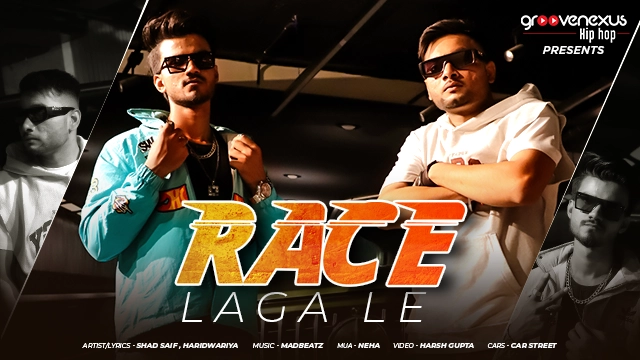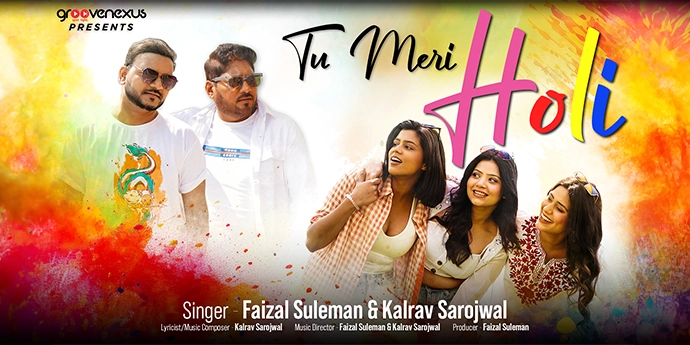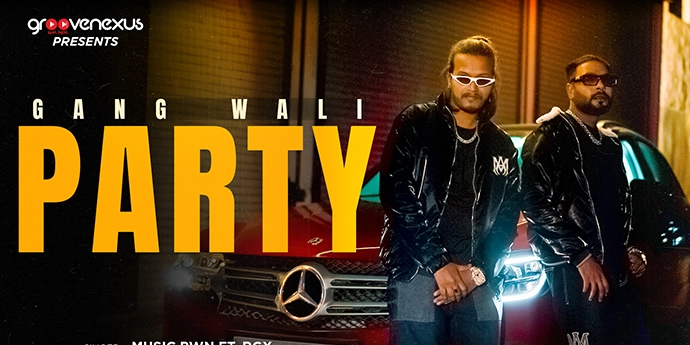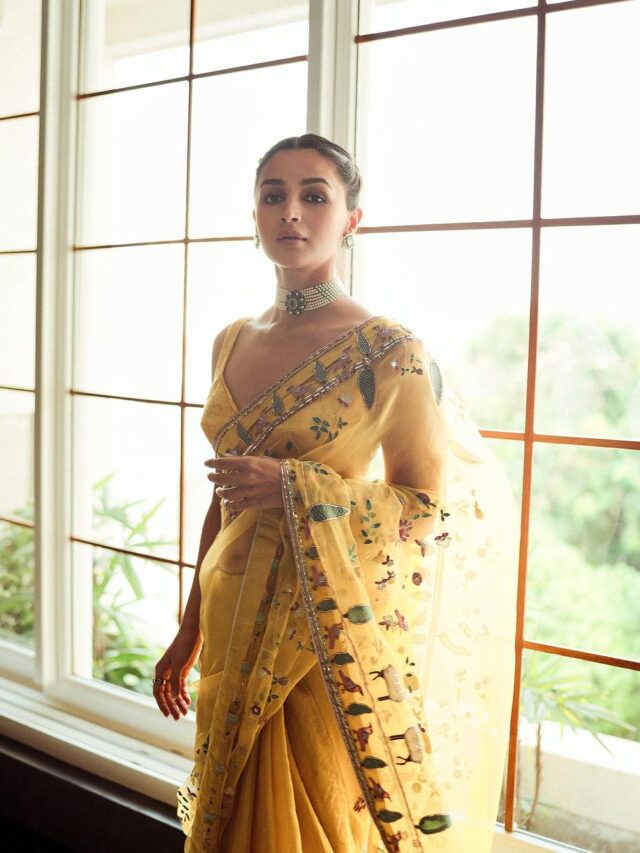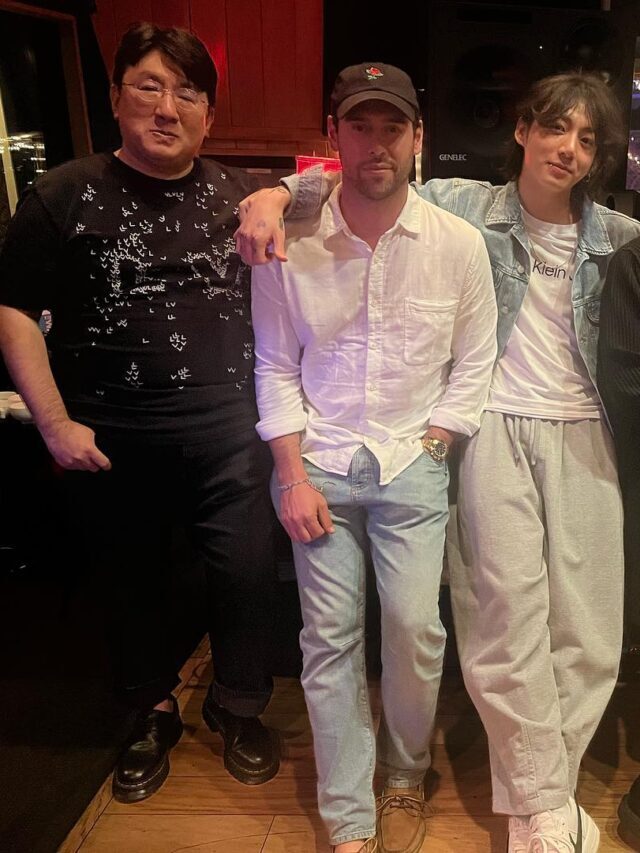What is pop music?
A genre of popular music, Pop Music is the music that became the backbone of the music industry in 1950 and continues to be one of the most significant genres of music. Pop music comprises many different forms of music such as blues, country, rock ‘n’ roll, western, rock, dance, rap, urban, and some new styles. Common record and broadcast are the formats in which it is covered. Live gigs and concerts are added as well. Pop music has been influenced by the world of classical and folk music and has also influenced different genres.
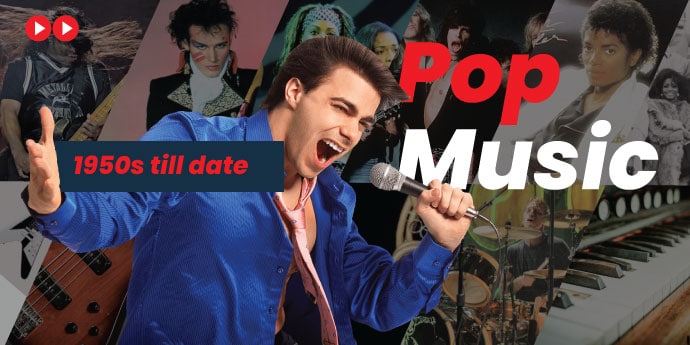
Popular music aka pop music emerged in the late 19th century after some scientific breakthroughs by Thomas Edison and Emile Berliner. The pop music genres vary from classical opera music to vaudeville, a kind of ‘variety entertainment’. It consists of small acts such as dancing, singing, comedy, and magic. In this way, it expands how pop music producers can sell more music promoted with live shows and ragtime. Ragtime is a style of piano music characterized by syncopated melodies.
The microphone, loudspeakers and electronic amplification is very significant to pop music. These technologies are vital to any music production. The microphone’s impact on the style of music is both very intense and subtle.
Table of Content
What makes Pop music pop?
For most people, music is not just entertainment but a way of life. Music has always played a significant role in connecting people, telling stories, and expressing moods and feelings. Every genre of music has its own kind of format, and each genre has its own different characteristics and key elements. The popular music genre is highly celebrated and one of the most widely accepted style of music in the world. Since its emergence in the 1950s, popular music has always broken barriers regardless of caste, creed or genre.
Key elements of Pop Music
Although there are no specific characteristics of the popular music as such, the genre can be easily identified by its repetitive verses and instrumental use. Pop music being vivacious, also comprises of themes such as heartbreak. The major role is of the pop artist who conveys the authenticity and essence of the genre. Pop music of the present day mostly revolves around trending topics like love and relationships.
Pop music has been through a sea of changes as a genre irrespective of you recalling the legendary duo of Everly Brothers. Some of the most famous pop artists who indeed define the grandeur of the genre are Michael Jackson. Madonna, Taylor Swift, The Beatles, Rihanna, Queen, Lady Gaga, Celine Dion, Katy Perry, Justin Bieber, Ed Sheeran, and the list is unending. hers or the sizzling Beyonce
Pop music is a genre that has many subgenres depending on the place of origin. However, the most popular forms of pop music genre with worldwide popularity are:
- Adult contemporary: A kind of radio-played music which emerged in the 1960s and 1970s. Celine Dion who sang ‘My heart will go on’ in the movie Titanic is known as the queen of adult contemporary.
- Arab Pop music: Originated in Cairo, it is a subgenre of popular music. The major characteristics of this genre are that it blends pop elements and melodies with various styles of Arabian music.
- Baroque Pop: This famous style of music was evolved in the 60s and is known as the genre of fusion music. Musicians who were expert in this genre combined rock music with some classical music elements.
- Bubblegum Pop: This subgenre of pop music consists of an upbeat sound and is mostly heard by pre-teens and teenagers. The period in which this genre was most popular was from 1967 to 1972 and marked the classic period of bubblegum pop music. Its second wave ran till 1977.
- Chalga: Popularly known as pop-folk, Chalga is a music genre from Bulgaria. The folk-inspired dance music genre has its influences from Greek, Turkish and Arabian music. Chalga got popular in 90s and beyond.
There are various other sub-genres of pop music like:
country-pop, dance-pop, C-pop, Indie pop, Jangle pop, Pop Rap, pop-soul, surf pop, synthpop, wonky pop, and numerous others as well.
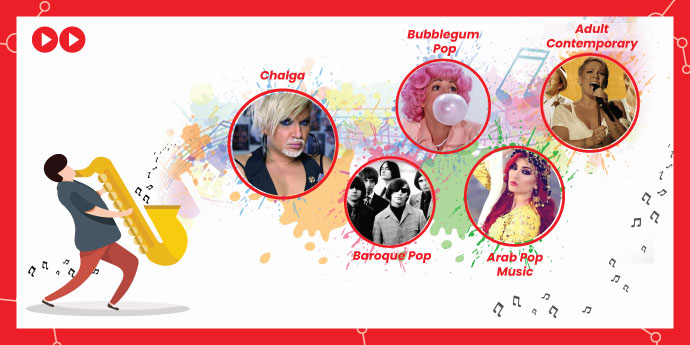
Based on the information available on the internet, let’s take you through the journey of pop music from the 1950s to the 2000s
Pop music in the 1950s to 1960s
African Americans originated Blues, a pop music genre in the Deep south of the US at the end of the 19th century. Blues has its ties from the work songs of African Americans, European American folk songs, and musical traditions of Africans. This style of music is comprised of chants, shouts work songs, and rhymed simple narrative ballads. Call and response patterns is what defines the Blues genre; the 12-bar blues is the most common of all blue scale and specific chord progression.
1. Twelve-Bar Structure of Blues:
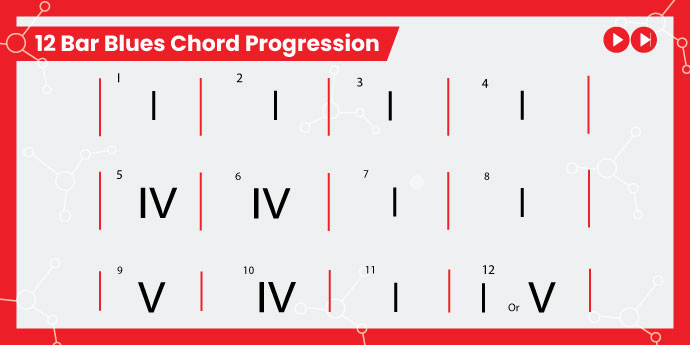
Blues as a genre has evolved into a huge variety of subgenres and styles from unaccompanied vocals over the years. There were many influences on blues music, such as Bluegrass, Jazz, Jug Band, Ragtime, Rock and Roll, and Country. Some of the key artists of blues are Bo Diddley, Eta James, Robert Johnson, Big Mama Thornton, Chuck Berry, and Otis Rush.
Some common instruments used in blues music are guitar, piano, bass, drums, blues harp, and slide guitar.
‘Talk to Me Baby’ written by Willie Dixon and recorded by Elmore James is an example of a slide guitar used in a blues song.
Dance music was another such style in the 1950s and 1960s and it was originally started specially to accompany dancing. It consists of a full-fledged music piece and can also be a section of a longer music piece. It was discovered in the late 19th century from western ballroom and social dance music. It became popular in the 1920s and in the 50s the most popular dance music was rock ‘n’ roll, followed by rise of soul and R&B in the late 60s. Disco became a hit in the 70s that made dance music insanely popular with the crowds. The Drifters, James Brown, Chubby Checker, and the Shadows are some of the key artists of the 1950s and 1960s.
Around this time, Ballads also started to gain popularity. Ballads are emotion songs about love and romance, longing and breakups. Ballads were originally intended to accompany dance; their composition was in the refrain with couplets. The dancers would then sing the refrains along with the dance. Aretha Franklin, Otis Redding, and Ben E. King are popular ballad artists in the 1950s and 1960s.
Musicians that sing and compose ballads are known as Balladeers. One of the very famous Balladeers was Perry Como who wrote songs for the older generation.
- R&B Genre
A genre that originated in the 1940s, R&B came from African Americans. Piano, drums, bass electric guitars, saxophone and sometimes a background vocalist are present in an R&B performance. Johnny Ace, Chuck Willis, Etta James, Joe Turner and Clyde McPhatter are some of the most famous artists of R&B. The Rolling Stones is also a famous band of R&B from the 1960s. R&B has had its influence on many other genres of music such as funk, soul, rock ‘n’ roll, doo-wop, disco, ska, hip-hop, psychedelic rock, reggae and garage rock. R&B also contributed to the development of rock ‘n’ roll over the years.
- Rock ‘n’ Roll genre
Emerged from the US in the late 1940s and early 1950s, rock ‘n’ roll is a form of pop music that was developed from different styles such as jazz, gospel, r&b and boogie-woogie with some country music elements as well. The rock ‘n’ roll beat is usually a blues rhythm with a backbeat mostly given by a snare drum. Mostly played with an electric bass or a double bass guitar, a drum kit and electric guitars. However, in the 50s, electric guitar was rarely used in most of hit songs. A very hit feature of rock ‘n’ roll famous tracks is a walking bass line outlining the chord with piano playing off the block chords and a doubling bass on the left hand.
- Rock
Initially originated as rock n roll in US in the 1950s, rock is a sub-genre of pop music that widened over years into various other styles. With its roots in rock n roll, it was highly influenced by country music, r&b, and jazz and classical music. Mostly, rock songs have a verse-chorus form with a 4/4-time signature. Lyrics are mostly romantic but also address social and political issues. By the late 1960s, many sub-genres of rock music emerged such as folk rock, blues rock, and country rock which eventually contributed to evolution of psychedelic rock. The rock sound is traditionally centered on an electric guitar which is amplified and is supported by usually an electric bass guitar. A large drum kit is used for making percussions with the use of large drums and big cymbals.
- Jazz
In psychedelic rock, the use of jazz harmony progressed in the 70s with some experimentation of jazz and chromatic harmony. The immensely popular Hendrix chord is not heard in the early rock ‘n’ roll music by Chuck Berry or from the famous band The Beatles which was popularized in the 60s and the music mostly revolved around more traditional progressions of harmony. Such artists in the early days mostly preferred major sixth and dominant seventh chords, which can be heard at the end of ‘I saw her standing there’ by The Beatles and Johnny B Goode’ by Chuck Berry.
New-age and synth pop are only some of the music genres that are mostly influenced by the rock music. Some famous rock music artists are Jimi Hendrix, Led Zeppelin, Roy Orbison, and Joni Mitchell.
- Skiffle
Skiffle is a music genre having its roots in jazz, blues and folk music. Majorly played using homemade and improvised instruments, skiffle played a significant role in kickstarting the careers of later renowned artist of jazz, folk, pop, blues and rock music. British blues, British folk revival, British rock and Beat music of the 60s are several genres that Skiffle influences. Key artists of Skiffle include: Lonnie Donegan, Ken Colyer’s Jazzmen, Johnny Duncan and the Bluegrass Boys and Lead Belly.
- Rockabilly
Dating back to the early 1950s in the United States, Rockabilly is one of the earliest rock n roll music styles. Blending in various sounds of western musical styles such as r&b with country. The genre was also majorly influenced by western swing music, jump blues, boogie woogie, and electric blues.
The rockabilly sound was characterized by strong rhythms, vocal twangs, and the tape echo on the lead vocal and lead guitar. The genre had many influences on the other genres of music such as punk rock, psychobilly, gothabilly and country rock. It still continues to be a popular style of music to this date in the UK and the US with artists such as Imelda May and Brian Setzer reviving the old genre on both the sides of the Atlantic. This style was made popular by artists such as: Elvis Presely, Bob Luman, Bill Haley, Carl Perkins, Jerry Lee Lewis and Johnny Cash. Key artists of rockabilly include: Bill Haley, Buddy Holly, Elvis Presley and Carl Perkins.
Pop music in the 1960s to 1970s
The pop music in the 60s was more advanced than the 50s music, due to many technological advances in the instrumentation of music equipment. New recording techniques were leveraged by artists a lot more in the 60s. In the late 60s, Ray Dolby’s noise reduction systems ‘Dolby A’ and ‘Dolby B’ were developed and with the help of these systems, the sounds of the late 60s became much clearer and less distorted in the 1950s.
As the music production in the 1960s became more advanced, the timbre in the music tracks became increasingly focused. For example, the beach boys had a much clearer tone in their vocals and instruments in their songs than ‘I Gotta Woman’ by Elvis Presley.
George Martin was very well known for his work with the Beatles. He had a formal music capability which helped The Beatles refine their talent and distinguish their sound from the rest. Their different sound has what made them successful. He also made important contributions to other tracks such as in ‘Lovely Rita,’ and the harpsichord part in ‘Fixing a Hole.’ ‘Yesterday’ by The Beatles was another track which had a great contribution from Martin. He played in the style of Bach to show the different voicings that could be used.
The Beatles were one of the very first artists to have a PA system and this was all because of the help and support by Martin who made use of the advanced technology. The Beatles and George experimented with a resonating glass bottle; a tape loaded the wrong way so it played guitar feedback accidentally. The abilities of Martin to arrange and studio expertise aligned with the Beatles’ passion to create a different kind of music each time is the reason behind their immense success.
Merseybeat had many influences on other styles of music as well such as Britpop, Ye-ye, power pop, psychedelic rock, pop-punk, garage rock and group soundtracks. Influential artists of Merseybeat include The Beatles, Cilla Black, Gerry and the Pacemakers, The Big Three and The Cryin Shames. The band Oasis, who used the same structure as The Beatles, proves that their structure can still be seen even after 40 years.
- Motown
This music genre used to be one of the most popular and influential music genres of this era. Beginning as a record company in the year 1959, Motown developed considerably over the years. It is a type of soul music that is mostly characterized by melodic electric bass guitar use of tambourines to accent the back beat and the distinctive chord structures and a ‘call-and-response’ style of singing originating in gospel music.
Richard Allan and Benny Benjamin, best known for their part in The Funk Brothers, created a foundation in which most of today’s music (e.g. rap, rock and drum and bass) is dependent. Allan and Benjamin also played on many other Motown tracks.
Pop music in the 1970s to 1990s
Electronica was another genre of pop music that was hugely popular between 1970s and 1990s. This genre incorporated various electronic-based styles such as ambient, house, jungle, techno, drum and bass, and industrial dance. The term “electronica ” describes the popularization of electronic music genres that were intended to be danced and listened to.
Electronica had influenced on many other music genres such as the Alternative dance and Post-rock. Some of the artists of Electronica are: Pet Shop Boys, David Bowie and Soft Cell.
- Glam Rock
In the early 1970s, glam rock was developed in the UK as a pop and rock music style and was performed by musicians who had extravagant looks- wearing outrageous makeup, hairstyles, and costumes. English psychedelic and art rock styles of the late 1960s gave birth to the glam rock. Glam artists blended many sources ranging from bubble-gum pop and ’50s rock and roll to cabaret theatrics, science fiction, and complex art-rock. Key artists of Glam rock include: David Bowie, Marc Bolan, Sweet, Slade and T. Rex. Glam Rock has had many influences on other genres of music, Like New wave, Synthpop, Gothic rock, Punk rock, Post-Punk and New romanticism.
- Heavy Metal
Evolved in the late 1960s and early 1970s, heavy metal is a genre of music which was developed in the United Kingdom and the US. Originated in blues rock and psychedelic/acid rock, heavy metal bands used to create very thick sounds with the help of amplified distortion, extended guitar solos, forceful beats, and overall loudness. Machismo and aggression are both often associated with the lyrics and performance styles of Heavy metal artists.
Three main harmonic attributes: tritone and chromatic progressions, the use of pedal points and modal scale progressions are what the heavy metal music is generally based on. Tritone is a note which is borrowed from the blues genre and blues scale, and it adds tension to the riff, or the melody as seen in Bar 2, beat 2+ of “Enter Sandman” by Metallica. The use of the low E pedal note is seen in “Master of Puppets” by Metallica.
Pop Music in the 2000s
The foundation of urban music was set in the American black music culture and the major events that influenced the wave of its steady evolution mostly happened in America. Key artists of Urban Music include Stormzy, Skepta, Dizzee Rascal and Lethal Bizzle.
- Pop rock
Pop rock is a lighter and smoother version of rock genre of music and is quite similar to the commercial style of pop music. Emerged as an alternative to the rock ‘n’ roll in the 50s, Pop rock has been highly influenced by style of rock ‘n’ roll and doo wop in its beat and arrangement in its initial stages of development. This genre gives a huge emphasis to the songwriting profession. Most of the pop and rock arrangement usually have a remarkably similar sound which is both in the instrumentation and lyrical content of the music. ‘Pop rock’ or ‘power pop’ is commercially phenomenally successful and consists of rock and pop music elements. Influences of Pop Rock music has been seen in many other genres such as: Brill building and soft rock. Pop/rock music artists include Coldplay, Maroon 5, Katy Perry, Fall Out Boy, and Rod Stewart.
Over the 2000s, many internet-based indie artists have become famous via their social media such as YouTube and Facebook. They begin their careers usually by covering songs of famous artists or popular songs and once they receive some fame, they begin singing their original songs. Boyce Avenue, Jake Bugg, Justin Bieber, Ed Sheeran, Tori Kelly and Us the Duo are just a number of popular artists that began as internet-based artists.
Ed Sheeran, one of the most famous artists of the world first started his career with YouTube by recording and posting videos of singing cover as well as original songs. In one of his recent hits ‘Shape of You’, he uses a chord progression that is heard in many popular songs from both the past and present. Earlier, it was not easy to learn how to make a pop song or how to make a beat but with the evolution of internet and YouTube, you can learn any type of music or an instrument just by sitting at home.
Music from the 2000s till today is difficult to separate into major styles as there is a diversity and variety of styles and many artists like to combine assorted styles. The launch of Apple iPod in the year 2001 has fully transformed the way we listened to our music. Later, Apple’s launch of the iPhone in June 2007 and then iPad in the year 2010 has also majorly impacted the way we access our music. In the development of these products, Apple has opened gateways to totally new and unique format for not just listening to music but to also purchase and download it. It has now become the easiest and fastest way to listen to your music from anywhere in the world at any time.
Since its emergence pop music and pop music production has dominated the listeners and music lovers. It is a boom for people who enjoy loud music and wish to go out in gatherings. If you are an aspiring artist and look forward to make your name in pop music follow some tips.
Tips to make and create pop music
There are a lot of things that artists must keep in mind while they are creating music or working on a record or mixing it. Pop artists give importance to the fact that their music must be widely accepted and heard by everyone universally. Here are some of the key tips for making and mixing pop music:
1. Flawless editing:
Not all music styles have a devil-may-care approach. Some of the music pieces that become a huge hit because of its unpolished arrangement and faded timbers. While the songs might be a hit because of such accidents, it is inevitable for a composer of pop music to stay extra attuned while mixing pop music.
Moreover, all professional mixing calls for thoughtfulness. In terms of pop music, a mixer always has to be more conservative while editing. If a composer needs to choose between going with safe or going with something experimental or off-killer, it is always better to go with the safer option.
2. Hide your Edits:
You better be careful of your editing, and you must always hide it. Ensure that your vocals are chopped off perfectly and do audio restorations periodically. You have to keep it in mind that it is for a vast audience and not for a niche audience.
Not only you must be careful with your editing but be aware of hiding it too. Ensure the vocals are perfectly chopped. Do audio restorations perfectly and don’t forget this is intended for the mass audience and not for a niche.
3. Listen to the top 10 references:
One of the most significant things that a pop music composer/mixer must keep in mind while making pop music is always listening to the top trending hits on important charts like billboards, iTunes, etc. This is important with regard to sound design and not musicality. This is also mandatory to have a look at the differences in terms of instrumentation, harmonic progression, and other facets.
4. Consider Mono Computability:
Mono computability is important in pop music even if some engineers do not use it as they used to do in the past. Pop music is played in different venues right from the supermarket, dance floor back of the can to the open concerts and more. It is mandatory for pop music engineers to regularly check and supervise the mono to make sure they deliver the same sound effect as stereo.
Create the difference between the chorus and the verse:
In a pop song, the hook usually resides in its chorus, or beyond. Loads of attention is given in these sections, and this is what separates the chorus from the verses. The pop mixer must play with frequency to make sure the sound is delivered distinctly from verses and chorus.
5. Create your own pop mixing template:
Working with an extensive template is not preferred by all sound and music engineers while working on the pop mix. It’s worth to use a template while working for it helps a lot.
Conclusion
To wrap up, the development of pop music from the 1950s to the current day has witnessed many changes in the pop music production as well as spreading out in different genres. The way we listen to music nowadays and the way it is recorded is also fully changed. Steps to producing a song has become a little more complicated and artists have a lot more instruments to choose from while making a pop song and it’s up to them how they want to use them. And for the listeners, there is a huge wealth of songs of different genres to listen to as compared to the 50s. However, this earlier style of music remains influential. As technology advances further, artists will have the capacity to be more experimental in their music production.



